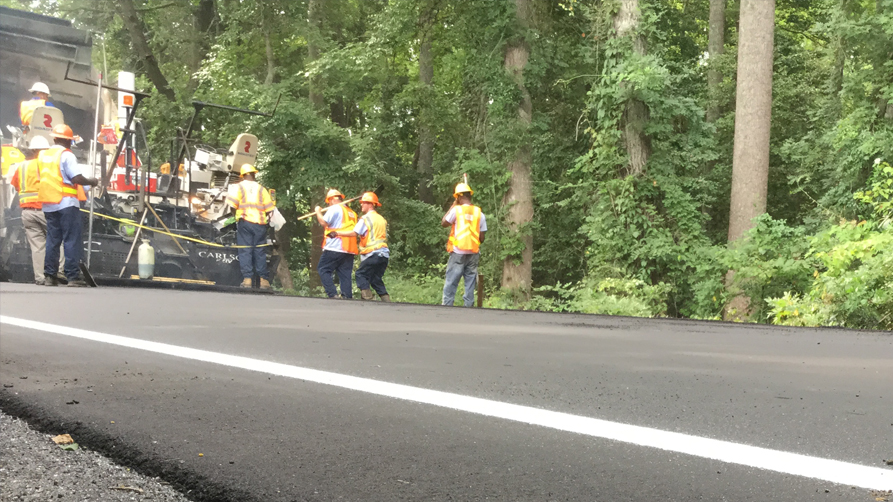Asphalt is the most common application for pavements because of the many attributes valued by engineers, owners, and users.
Perpetual Pavements
An asphalt Perpetual Pavement is designed and built to ensure that the structure lasts virtually indefinitely. Routine maintenance is simply a matter of periodically milling (about every 12 to 20 years) the surface for recycling, followed by placement of a new, smooth new overlay. Not surprisingly, these periodic overlays significantly improve the ride quality and fuel consumption of vehicles traveling these roads.
Bottom line: Throughout its life, an asphalt pavement’s ride and performance are just as good as new.
Thinlays

A new generation of thin-lift asphalt overlays called Thinlays™ are the answer to our nation’s immediate demand for pavement preservation. Starting at 5/8”, this armor-like suite of asphalt mixes is tailored to local needs and prolongs pavement life making roads stronger, smoother, safer, and more driveable. Driver safety is enhanced, and fuel consumption and noise are reduced, all while using a process that can recycle and reuse national resources. In fact, Thinlays are the most cost-effective pavement preservation option for ensuring the long-lasting road performance.
Smoothness
Studies have demonstrated the fact that pavement smoothness is a significant determinant of vehicle fuel economy. The smoother the pavement, the lower a vehicle’s fuel consumption. But which tends to be smoother, asphalt or concrete? Well, one indication comes from state DOTs’ standards, which have specifications for newly built roads. If the road does not meet the smoothness standard, the contractor’s pay is reduced. Some states have different standards for asphalt and concrete, and in every state where this is the case, the requirements for asphalt roads are more stringent than for concrete roads.
Smoother pavements also last longer because trucks’ tires roll more easily along the pavement instead of bouncing on bumps – and such bouncing actually accelerates road deterioration. Studies show that improving pavement smoothness by 25 percent results in almost a 10 percent increase in pavement longevity. Smooth roads don’t just save taxpayers money by lasting longer, they also conserve precious natural resources.
Quiet Pavements
Noise, including road noise, is a pervasive form of environmental pollution. There is no better way to reduce road noise than to treat the problem at its source. By paving roads and highways with asphalt, the noise generated by at the tire-pavement interface – noise that affects people as they go about their daily lives – can be significantly reduced. Paving with asphalt is actually more effective than building expensive, unsightly noise walls.
Speed of Construction
Paving with asphalt cuts construction project time significantly and eliminates the long curing times of concrete. As a result, traffic flows more smoothly and impact on commerce is minimized. Asphalt paving projects can be planned and carried out to take advantage of off-peak periods, like nights and weekends. Asphalt is ready for traffic right after it is compacted and cooled, meaning that roads don’t have to remain closed for curing. This enhances traffic flow and minimizes closures and delays that frustrate motorists and cost money. Maintenance is quick, cost-effective, and less disruptive than with concrete pavements.